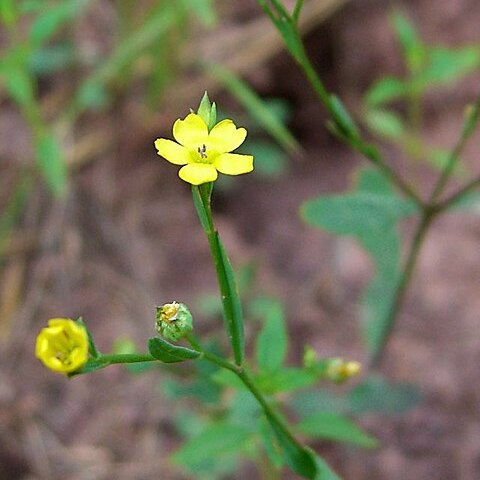Herbs, usually perennial, rarely annual, 10–80 cm, glabrous. Stems erect, usually multiple from base, unbranched proximal to inflorescence. Leaves: proximal 3–20 pairs opposite, distal alternate, rarely (in northern plants) opposite nearly to inflorescence, erect to appressed; stipular glands absent; blade narrowly lanceolate to oblanceolate, 10–25 × 1.5–5.5 mm, margins entire, not ciliate, apex obtuse or apiculate. Inflorescences corymbs. Pedicels 0–5 mm. Flowers: sepals persistent, lanceolate, inner somewhat shorter, broader than outer, outer sepals 2–5 mm, margins not scarious, inner usually glandular-toothed, rarely entire, outer entire, apex acute; petals lemon yellow, obovate, 4.5–8 mm; stamens 2.5 mm; anthers 0.5–l.3 mm; staminodia absent; styles distinct, 1–3 mm; stigmas capitate. Capsules depressed-globose, 1.6–2.3 × 2–2.5 mm, apex depressed, tardily (or readily in var. medium) dehiscing into 10, 1-seeded segments, segments usually persistent on plant, false septa nearly complete, proximal margins not ciliate. Seeds 1.3–1.7 × 0.6–0.8 mm.

